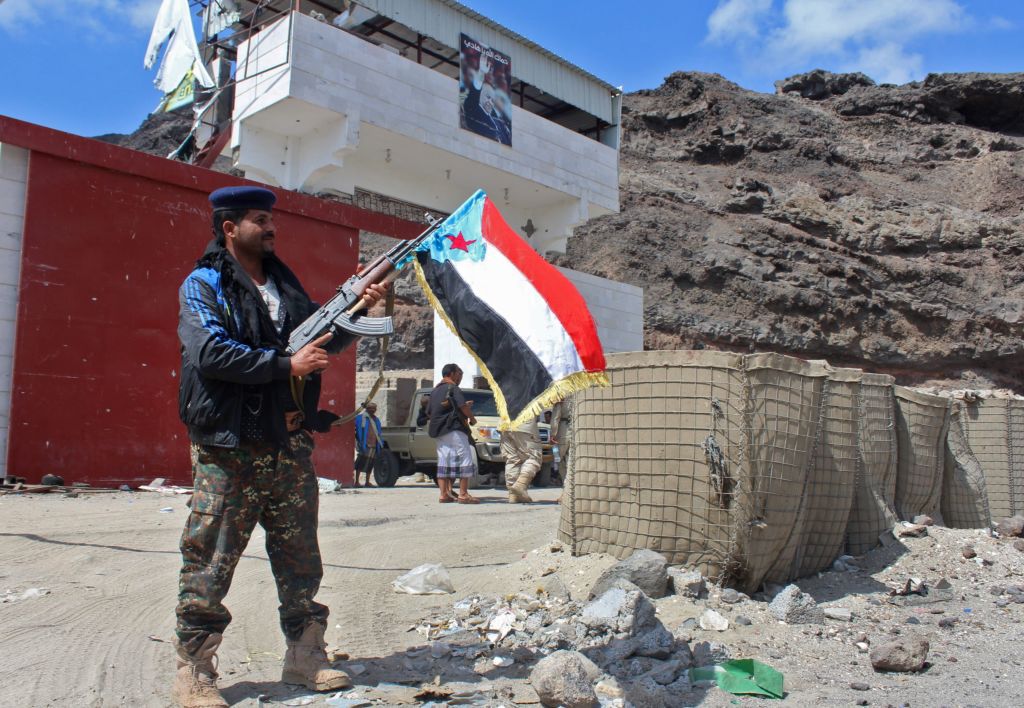The Future Prospects of South Yemen Independence: A State Forged in War.
June 22, 2023

In the midst of international efforts to establish peace and talks between the Houthis and Kingdom of Saudi Arabia, all indications are pointing towards the end of the prospect for the unification of a Yemeni state reflective of the 1990 Yemen Arab Republic boundaries. The South Transitional Council (STC) is the main driving force behind the establishment of a sovereign and unified South Yemen state defined by pre-1990 territorial borders; the primary goal of the organization since its inception in 2017 and an historical aspiration of all southerner’s. More recently, demonstrable progress is underway to realize aspirations of statehood.
A five-day southern consultative meeting chaired by STC President Aidarous Al-Zubaydi in Aden May 4-8 included leaders from the nine different AL-Hirak factions across the south and resulted in the signing of the Southern National Pact (SNP), restructuring of the STC, and a declaration of intention to form a sovereign state. The SNP is the most significant step towards southern political autonomy and successfully reconciled southern differences based on the 2019 Riyadh Agreement, that recognized the STC as the sole representative of South Yemen. Effectively, the SNP politically and militarily coalesced Al-Hirak movements under the auspice of the STC, forming a consensus for and laying the foundation of an autonomous South Yemen. STC political and military control now envelopes South Yemen, absent the contested areas in Seiyun (Hadramout) and Al-Mahara.
While the STC has a cabinet, parliament, and president, in line with state-building, it must now establish a monopoly of violence across the whole of the south to ensure sovereignty and legitimize political rule. South Yemen’s path towards future political autonomy will continue, but face many hurdles from northern factions and other parties reluctant to relinquish control over the southern region’s valuable resources, making the prospects for a stable and autonomous South Yemen state a challenging, albeit not impossible objective to achieve.
Houthi militants and other forces decided to intensify attacks against STC military forces in May across the south, in Tur Al-Baha, Lahj, Thirah, Abyan, northern Al-Daleh, Thirah, Abyan, Yaefy, Al-Had and Kirsh, Lahj, based on the declaration to form a southern state. This month, Houthi forces placed ballistic missiles at the front in Kirsh in preparations for more attacks. Simultaneously, units of the STC face attacks and sporadic clashes with both Al-Islah and AL-Qaeda in the Arabian Peninsula (AQAP). The STC is expecting AL-Islah, the Houthis, other northern factions, and potentially AQAP to forge an “alliance” to implement unity by force similar to 1994.
A purported peace map outlined by United Nations Special Envoy to Yemen Hans Grundberg this month calls for direct talks between the Houthis and the STC and the recognition of a de facto South Yemen. While, the latter is not against international endeavors to forge peace, the STC has been largely sidelined from the Houthi-Saudi talks and the southerners will never unite with a legitimatized Houthi dominated North Yemen and enter into negotiations based on Houthi terms for a number of reasons, especially the demand that Houthi salaries be paid from southern oil resources.
Long-standing endeavors by the international community and United Nations to end the internecine conflict stems from the failure to understand that Houthi actions are driven by a radical and revolutionary ideology. The Houthis thrive in war and will continue to militarily confront STC forces, nor negotiate in good faith. The group is rearming, resupplying and advancing recruitment and continues to fight despite ongoing negotiations, synonymous with past practices during peace talks. However, the STC succeeded in merging all the major military forces in the south, making it the most dominant military power in the Internationally Recognized Government and potentially the whole of Yemen.
In the end, the STC understands that if a peaceful resolution fails to materialize, there is little choice but take up arms and fight to achieve political autonomy, and their determination to secure an independent south is steadfast. With no viable options to convince the STC to negotiate, the Houthis and Islah are left with the daunting task of confronting the STC to stymie aspirations for self-determination. It is a a high-stakes situation that highlights the complexity of the conflict and the inevitable clashes that likely lay ahead in the path toward the emergence of a South Yemen state.
